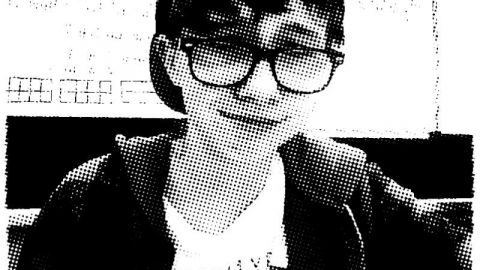Swinging bipolar (II) presumes at least one major depressive episode, plus at least one hypomanic episode over at least four days. The same characteristics as mania are evident, with the disturbance of mood observable by others, but the episode is not enough to disrupt normal functioning or necessitate hospitalization, and there are no psychotic features.
Those in a state of hypomania are typically the life of the party, the salesperson of the month, and more often than not the best-selling author or Fortune 500 mover and shaker, which is why so many refuse to seek treatment. But the same condition can also turn on its victim, resulting in bad decision-making, social embarrassments, wrecked relationships, and projects left unfinished.
Hypomania can also occur in those with raging bipolar, and may be the prelude to a full-blown manic episode.
While working on the American Psychiatric Association’s latest DSM version of bipolar (IV-TR), Trisha Suppes MD, PhD of the University of Texas Medical Center in Dallas carefully read its criteria for hypomania, and had an epiphany. “I said, wait,” she told a UCLA grand rounds lecture in April 2003 and webcast the same day, “where are all those patients of mine who are hypomanic and say they don’t feel good?”
Apparently, there is more to hypomania than mere mania lite. Dr Suppes had in mind a different type of patient, say one who experiences road rage and can’t sleep. Why was there no mention of that in hypomania? she wondered. A subsequent literature search yielded virtually no data.
The DSM alludes to mixed states where full-blown mania and major depression collide in a raging sound and fury, but nowhere does it account for more subtle manifestations, often the type of states many bipolar patients may spend a good deal of their lives in. The treatment implications can be enormous. Dr Suppes referred to a secondary analysis Swann of a Bowden et al study of patients with acute mania on lithium or Depakote which found that even two or three depressed symptoms in mania were a predictor of outcome.
Clinicians commonly refer to these under-the-DSM radar mixed states as dysphoric hypomania or agitated depression, often using the terms interchangeably. Dr Suppes defines the former as “an energized depression,” which she and her colleagues made the object of in a prospective study of 919 outpatients from the Stanley Bipolar Treatment Network. Of 17,648 patient visits, 6993 involved depressive symptoms, 1,294 hypomania, and 9,361 were euthymic (symptom-free). Of the hypomania visits, 60 percent (783) met her criteria for dysphoric hypomania. Females accounted for 58.3 percent of those with the condition.
Neither the pioneering TIMA Bipolar Algorithms nor the APA’s Revised Practice Guideline (with Dr Suppes a major contributor to both) offer specific recommendations for treating dysphoric hypomania, such is our lack of knowledge. Clearly the day will come when psychiatrists will probe for depressive symptoms or mere suggestions of symptoms in mania or hypomania, knowing this will guide them in the prescriptions they write, thus adding an element of science to the largely hit or miss practice that governs much of meds treatment today. But that day isn’t here yet.
Bipolar Depression
Major depression is part of the DSM-IV criteria for swinging bipolar, but the next edition of the DSM may have to revisit what constitutes the downward aspect of this illness (see Bipolar Depression article). At present, the DSM-IV criteria for major unipolar depression pinch-hits for a genuine bipolar depression diagnosis. On the surface, there is little to distinguish between bipolar and unipolar depression, but certain “atypical” features may indicate different forces at work inside the brain.
According to Francis Mondimore MD, assistant professor at Johns Hopkins and author of “Bipolar Disorder: A Guide for Patients and Families”, talking to a 2002 DRADA conference, people with bipolar depression are more likely to have psychotic features and slowed-down depressions (such as sleeping too much) while those with unipolar depression are more prone to crying spells and significant anxiety (with difficulty falling asleep).
Because bipolar II patients spend far more time depressed than hypomanic (50 percent depressed vs one percent hypomanic, according to a 2002 NIMH study) misdiagnosis is common. According to S Nassir Ghaemi MD bipolar II patients 11.6 years from first contact with the mental health system to achieve a correct diagnosis.
The implications for treatment are enormous. All too often, bipolar II patients are given just an antidepressant for their depression, which may confer no clinical benefit, but which can drastically worsen the outcome of their illness, including switches into mania or hypomania and cycle acceleration. Bipolar depression calls for a far more sophisticated meds approach, which makes it absolutely essential that those with bipolar II get the right diagnosis.
This bears emphasis: The hypomanias of bipolar II – at least the ones with no mixed features – are generally easily managed or may not present a problem. But until those hypomanias are identified, a correct diagnosis may not be possible. And without that diagnosis, your depression – the real problem – will not get the right treatment, which could prolong your suffering for years.
Bipolar I vs Bipolar II
Dividing bipolar into I and II arguably has more to do with diagnostic convenience than true biology. A University of Chicago/Johns Hopkins study, however, makes a strong case for a genetic distinction. That study found a greater sharing of alleles (one of two or more alternate forms of a gene) along the chromosome 18q21in siblings with bipolar II than mere randomness would account for.
A 2003 NMIH study tracking 135 bipolar I and 71 bipolar II patients for up to 20 years found:
Both BP I and BP II patients had similar demographics and ages of onset at first episode.
Both had more lifetime co-occurring substance abuse than the general population.
BP II had “significantly higher lifetime prevalence” of anxiety disorders, especially social and other phobias.
BP Is had more severe episodes at intake.
BP IIs had “a substantially more chronic course, with significantly more major and minor depressive episodes and shorter inter-episode well intervals.”
Nevertheless, for many people, bipolar II may be bipolar I waiting to happen.
Conclusion
The DSM’s one-week minimum for mania and four-day minimum for hypomania are regarded by many experts as artificial criteria. The British Association for Psychopharmacology’s 2003 Evidence-based Guidelines for Treating Bipolar Disorder, for instance, notes that when the four-day minimum was reduced to two in a sample population in Zurich, the rate of those with bipolar II jumped from 0.4 percent to 5.3 percent.
A likely candidate for the DSM-V as bipolar III is “cyclothymia,” (see article) listed in the current DSM as a separate disorder, characterized by hypomania and mild depression. One third of those with cyclothymia are eventually diagnosed with bipolar, lending credence to the “kindling” theory of bipolar disorder, that if left untreated in its early stages the illness will break out into something far more severe later on.
The medical literature refers to bipolar as a mood disorder, and the popular conception is one of mood swings from one extreme to the other. In actuality, this represents only a small part of what is visible to both the medical profession and the public, like the spots on measles. (Many of those who are bipolar, incidentally, can function untreated in the “normal” mood range for sustained periods of time.)
The cause and workings of the disorder are total terra incognita to science, though there are lots of theories. At the Fourth International Conference on Bipolar Disorder in June 2001, Paul Harrison MD, MRC Psych of Oxford reported on the Stanley Foundation’s pooled research of 60 brains and other studies:
Among the usual suspects in the brain for bipolar are mild ventricular enlargement, smaller cingulate cortex, and an enlarged amygdala and smaller hippocampus. The classical theory of the brain is that the neurons do all the exciting stuff while the glia acts as mind glue. Now science is finding that astrocytes (a type of glia) and neurons are anatomically and functionally related, with an impact on synaptic activity. By measuring various synaptic protein genes and finding corresponding decreases in glial action, researchers have uncovered “perhaps more [brain] abnormalities … in bipolar disorder than would have been expected.” These anomalies overlap with schizophrenia, but not with unipolar depression.
Dr Harrison concluded that there is probably a structural neuropathology of bipolar disorder situated in the medial prefrontal cortex and possibly other connected brain regions.
Still, so little is actually known about the illness that the pharmaceutical industry has yet to develop a drug to treat its symptoms. Lithium, the best-known mood stabilizer, is a common salt, not a proprietary drug. Drugs used as mood stabilizers – Depakote, Neurontin, Lamictal, Topamax, and Tegretol – came on the market as antiseizure medications for treating epilepsy. Antidepressants were developed with unipolar depression in mind, and antipsychotics went into production to treat schizophrenia.
Inevitably, a “bipolar” pill will find its way to the market, and there will be an eager queue of desperate people lining up to be treated. Make no mistake, there is nothing glamorous or romantic about an illness that destroys up to one in five of those who have it, and wreaks havoc on the survivors, not to mention their families. The streets and prisons are littered with wrecked lives. Vincent Van Gogh may have created great works of art, but his death in his brother’s arms at age 37 was not a pretty picture.
The standard propaganda about bipolar is that it is the result of a chemical imbalance in the brain, a physical condition not unlike diabetes. For the purposes of gaining acceptance in society, most people with bipolar seem to go along with this blatant half-truth.
True, a chemical storm is raging in the brain, but the analogy to the one taking place in the diabetic’s pancreas is totally misleading. Unlike diabetes and other physical diseases, bipolar defines who we are, from the way we perceive colors and listen to music to how we taste our food. We don’t HAVE bipolar. We ARE bipolar, for both better and worse.



